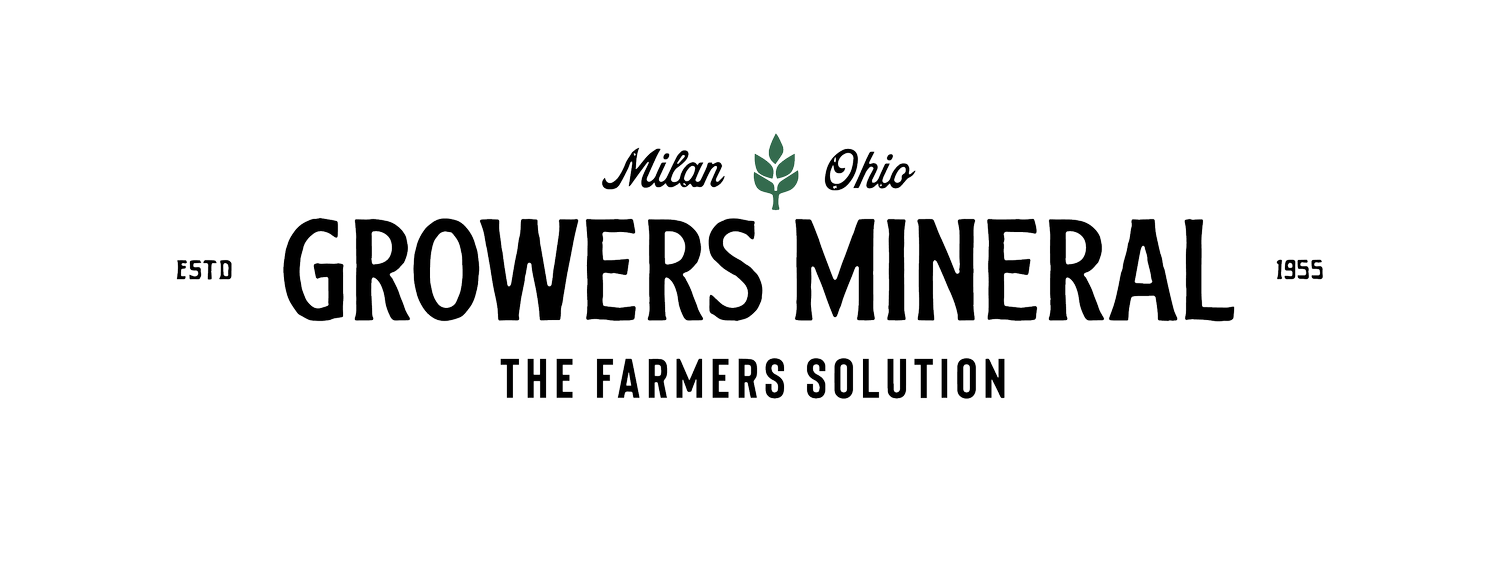FAQs
How can I feed fertilizer to my cows?
Short answer
The ingredients used to formulate GMS are low in heavy metal concentration. This helps to make GMS safe to feed to animals. Our experience with chemical analyses of various fertilizers and feeding minerals have shown us that the heavy metal concentrations of GNS is the lowest in both the organic and inorganic fertilizer and the animal mineral businesses.
Purity of minerals is the foundation
The purity of the minerals used to formulate Growers Mineral Solutions (GMS) is the foundation to this answer. Many times, the fertilizer industry uses very low cost materials that tend to be high in concentrations of heavy metals. Many agronomists disregard the heavy metals concentration in fertilizer. They believe the soil will absorb the heavy metals, thereby detoxifying those minerals.
GMS is formulated differently than most fertility materials with the idea of using ingredients that are low in heavy metal concentration. This is one reason GMS is safe to feed to animals. Other fertilizers could be toxic to the animals.
GMS shows low in heavy metal analysis
Our experience with chemical analyses of various fertilizers and feeding minerals have shown us that the heavy metal concentrations of GMS is the lowest in both the fertilizer, that includes organic fertilizer, and the animal mineral businesses. As a side note, we have learned that the type of testing procedure is very important to determine the correct levels of heavy metals in either the finished product or its raw ingredients.
Won't using such a small amount of fertilizer eventually "wear out" my soil?
Short answer
All plant tissue is composed of 96 to 97% carbon (C), hydrogen (H), and oxygen (O).
Let's grow 150 bushels per acre of corn. According to a current study ("Nutrient Removal by Corn Grain Harvest"); we would need 219 pounds of nutrients. (Remember the three most abundant elements: carbon, hydrogen, and oxygen are free) Growers would recommend 8 gallons of Growers Mineral Solutions (GMS), which is 91.2 pounds with another 80 pounds of nitrogen to give us 171(91+80) pounds of applied elements.
We now have a gap of nutrients of 48 pounds per acre (219-171). Using the Growers Composition of Soil chart (Section 2) for a silt loam soil, we arrive at 61,725 pounds of elements for an acre of soil that is 7 inches in depth.
So, in conclusion if we are going to "wear out" soil by keeping roots in the top 7 inches of soil, we need 1,286 years (61,725/48) for that "wear out" to occur.
Origin
Studying the early basic scientific research, Dr. Tiedjens realized that all plant tissue was predominately carbon (C), hydrogen (H), and oxygen (O) (96 to 97 percent). He believed that a very competitive crop could be produced using a small amount of added fertility elements if they were used at the correct time in the plant's life.
Shortly after World War II, the sale of chemical elements as fertilizer became big business. The sales tool of the fertilizer companies was to use plenty of fertilizer so as not to "wear out" the soil. There was very little early research on nutrient removal of crops from the soil.
Employing Dr. Kenneth C. Beesen's analysis, Dr. Tiedjens explained to farmers that the elements present in a crop can vary tremendously in amounts ("Crop Yields and Mineral Content"). In addition, Beesen's work demonstrated that if some principle nutrients were low in the soil, the crop would "hog" feed on the other nutrients to fill the deficient nutrient's place.
From this, Dr. Tiedjens concluded that the fertilizer industry which was selling nitrogen, phosphorus, and potassium, wanted to substitute the elements they were selling for the elements they were not selling, such as calcium or magnesium. Thus, if the soil nutrients vary and the fertilization varies, crop removal of nutrients will vary.
Recent studies
More recently nutrient management studies have focused attention on crop removal of nutrients. Those studies also see a large variation in nutrient contents of crops ("Nutrient Removal by Corn Grain Harvest"). The authors say the "grain nutrient concentrations can be highly variable even for a given corn hybrid grain in different environments."
These differing environments make nutrient removal numbers suspect especially when dealing with high input agriculture. The same crop yield can give you different extraction numbers.
Run the numbers
To do some comparing we can use the numbers of the latest study and find out exactly what you may need to extract in nutrients from the soil profile over time.
For an example, let's grow 150 bushels per acre of corn. From Table 3 "Nutrient Removal by Corn Grain Harvest", our extraction includes 11 elements (remember the three most abundant elements carbon, hydrogen, and oxygen from Section 2 are free), so, for 150 bushels per acre, we would need 219 pounds of nutrients for our crop (Table A).
